Finishing services is very important for these parts that need a cosmetic surface effect. Many designer hope the prototypes have the same effect according to their design. In this situation, surface finishing treatment is very necessary for your prototypes. At NICE Rapid, we are able to provide various of surface finishing services, like painted, anodization, pad printing, silk screen, laser engraving, powder coating, plating etc... Below we will introduce several kinds of surface finishing to let you understand different finishing effect. Interested? Feel free to contact us via enquiry@nice-rapidtooling.com to get free QUOTE!
Vapor Polishing | Anodization | Paint | Sandblasting | Laser Engraving | Pad Printing
Vapor Polishing
What’s Vapor Polishing? 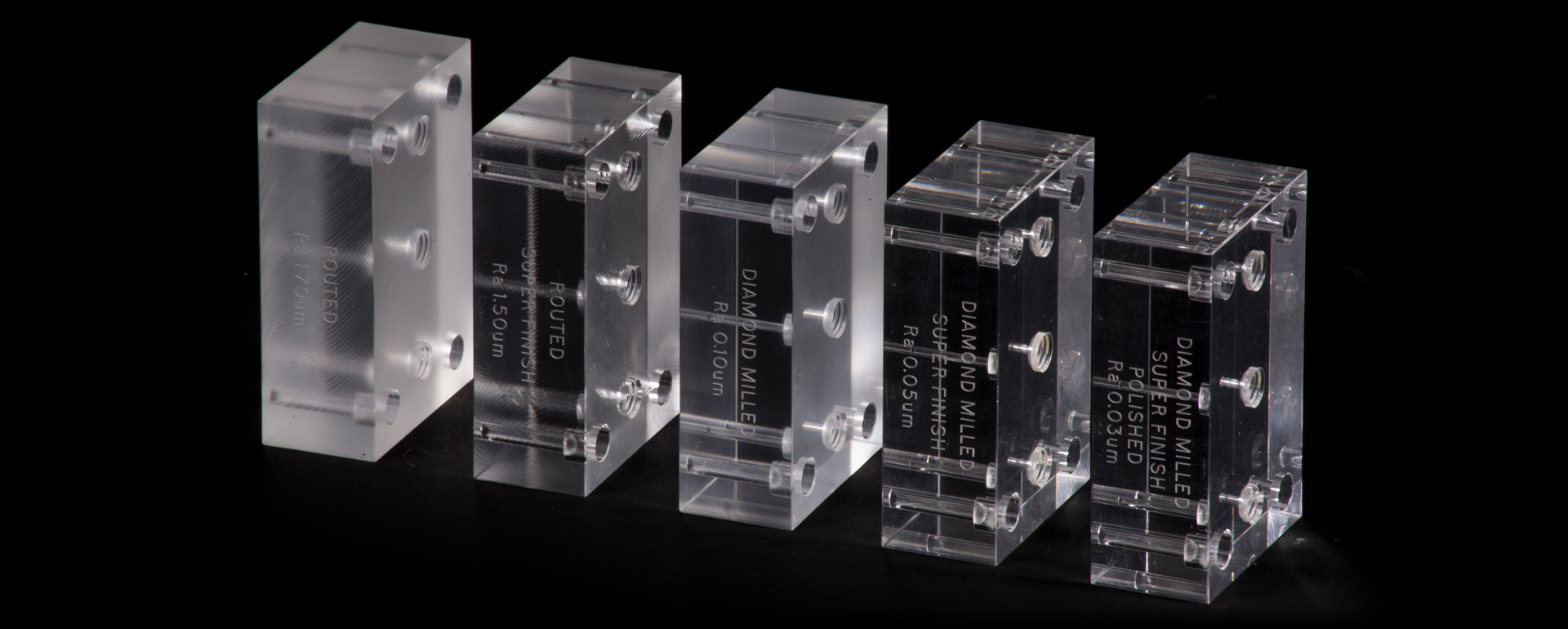
Vapor polishing is a method that utilizes vapor to polish plastics, which reducing the surface roughness or improve clarity. This method of polishing is used to get an optical quality finish effect from non-transparent plastic. Such as lens or windows that require a lightweight optical quality, vapor polishing is the fast and best way to achieve optimal transparency.
Then which kinds of plastics can be used in this method? Like polycarbonate, acrylic, polysulfone, PEI, and ABS Plastics that respond well to vapor polishing.
How Does Vapor Polishing Work?
Before polishing, the parts need sanding up in order to remove some burr. Then the part or surface of parts need to be polished is exposed to strong Weldon gas vapors. The solvent vapor melts the plastic on a molecular level. And the vapor is allowed to evaporate after completion of the process. Then the surface of parts becomes clear, smooth, and get optical quality finish.
Vapor polishing is a special process that requires exceptional skill with chemical applications and specialized machinery. It requires a clean and dust-free environment as well. Therefore, this process requires special training of technicians to operate.
Benefits of Vapor Polishing
1>Improving surface quality. It can impart a glossy and professionally-polished appearance.
2>Smoothing out surface irregularities and gate areas.
3>Final resulting in an optically or ‘water clear’ finish.
4>Has a wider applications in acrylic or polycarbonate products that light needs to pass through freely.
Anodization
Anodizing is an electrochemical surface treatment for aluminum parts that got a anodized film coating, which has protective, decorative and other functional properties. Aluminum is ideally suited to anodising. And depending on the type required, we are able to provide the anodizing thickness types as following:
Chromic Acid Anodize Type I thickness – .00005”-.0001”
Sulfuric Acid Anodize Type II thickness – .0001”-.0008”
Hard Coat Anodize Type III thickness – .0008”-.003”
How Does Anodizing Work? 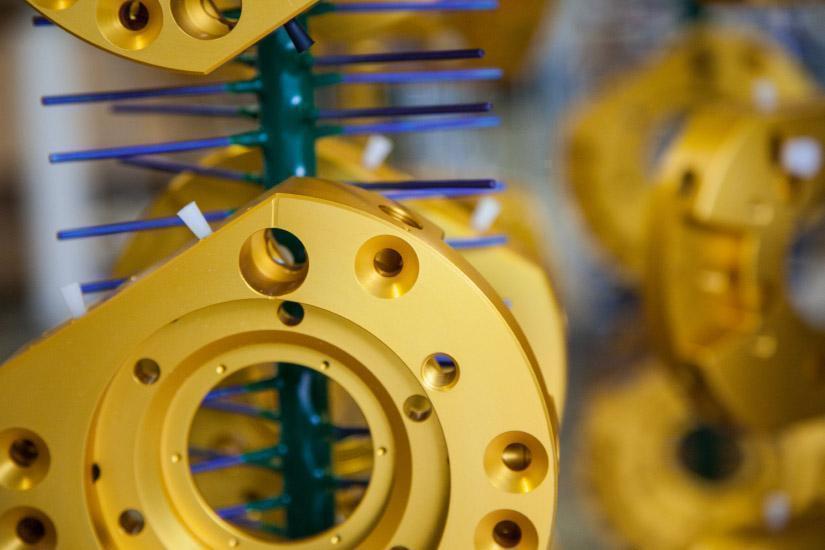
Aluminum anodizing is usually performed in an acidic poor that charged by electrolytic.
By applying electricity to aluminum, the parts become an anode to cathode in a completed circuit, while immersed in an electrolyte acid bath. The electricity and acid batch work together to open up the surface of texture and crystal structure, which build the thickness of natural oxide layer.
The advantages of anodizing
Anodizing is widey used in aluminum alloys, which improves corrosion and wear resistance. Moreover, it provides better adhesion for paint primers and glues than does bare or untreated metal. Here, we see some advantages of anodizing:
*Color Stability
*Durability and wear resistance
*Corrosion resistance
*Improvded Aesthetics
*Low cost
*Heat dissipation
*Ease of maintenance
Will the Aluminum Anodizing Affect Dimensions?
Yes, anodizing will affect the dimension because there is a coating on surface of aluminum parts. In general, 50% of an anodized coating will penetrate the surface of material, and 50% of the coating will be formed on surface. Therefore, the change in final dimensions is determined by the thickness of coating.
In this situation, we need to control the thickness of coating with exceptional accuracy by using advanced technology. We are committed to provide the high-quality products and keep close contact with our customers.
How to Match the Color that Satisfy Customer’s Required?
Due to the changes in surface and crystal structure, the anodized surface becomes ideal for absorbing dyes in color applications. Many colors are available, anodized aluminum surfaces provide color stability under ultraviolet light and a chip-free painted surface.
Many colors are available in anodizing. Usually technican matches the color according to Pantone code or RAL color card. Sometimes there will be color aberration.

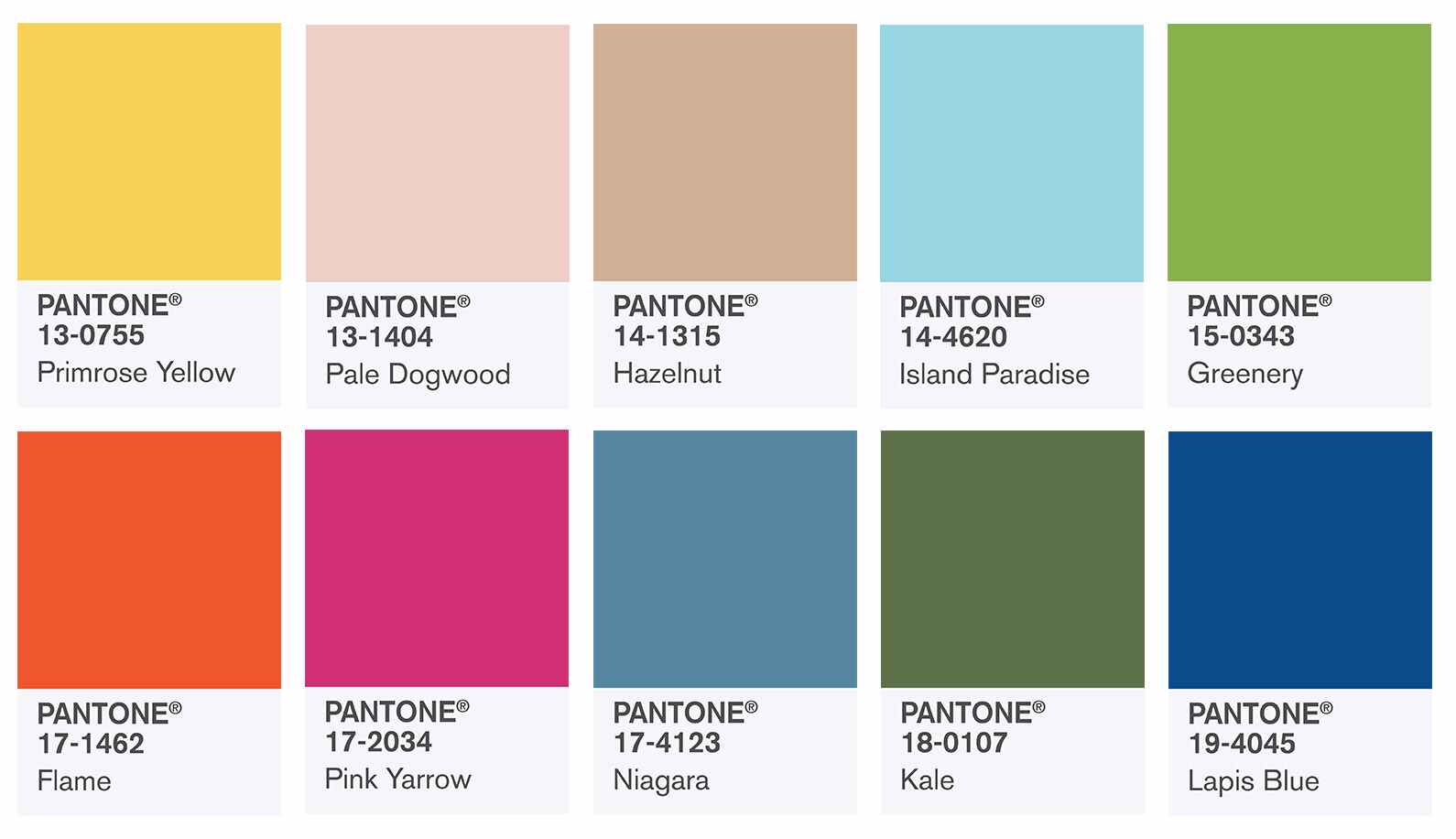
Does the Anodizing is Same as Plating?
They are two kinds of different process. Many people think that anodizing is just a plating process. Actually, it is inaccurate because the surface that to be anodized does not get a surface coating in a same way as the surface to be plated.
The difference between plating and anodizing: plating is a process where a coating is applied to the surface while anodizing is a process that modifies the surface. Electroplating is a process that to add a metal protective layer on the surface, but aluminum is generally not suitable for electroplating.
Hope it is helpful for you to distinguish the two process.
Painted
Painting is a kind of surface coating process for industries products. It sprays liquid paint on surface of products, through natural air drying or baking, a layer of coating is formed on surface.
It includes platics painting, silk screen and pad printing process. The products look more beautiful after spraying various colors. Meanwhile, this method can extend the service life of products.
Plastic products can be sprayed with various colors of ink, such as UV oil, hand oil, rubber oil, ordinary ink and so on. According to the different requirements of glossness, the glossness of paint can be divided into three types as following:
Type 1: Gloss Painted Surface
Good reflective effect, high anti -luminosity, clean and clear surface bright
Type 2: Semi-matte Painted surface
Type 3: Matte Painted Surface
Low reflection rate, color and lustres is softer
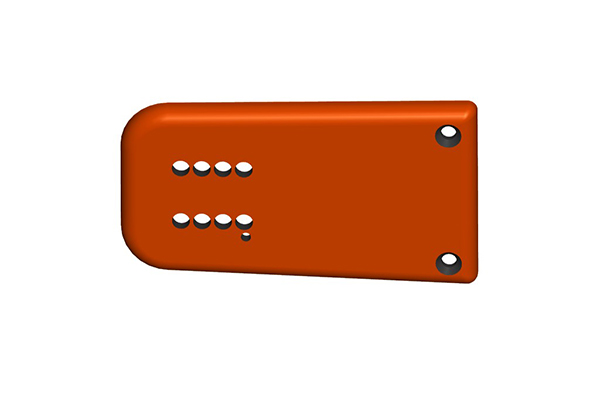
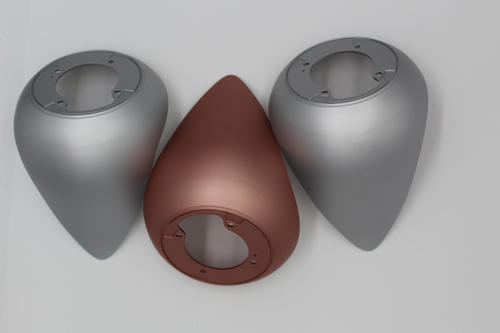
What’s Factors Will Affect the Surface During Painting Process?
Factor #1:Smooth and flat surface is necessary. In this way, no flow marks, scratches, pitting and bubbling are left on the surface of the product after oil injection.
Factor #2:Heat and humidity resistance. Constant temperature and humidity tests should be carried out before spraying to improve the appearance of the surface without too many pinholes and bubbles.
Factor #3:Dust-free enviroment is required. Liquid paint need thrugh air drying or baking. At this time, the surface is easy to absorb dust pariticles, which will affect the apperance of product.
Factor #4:Keep the temperature constant. Too high temperature, paint is easy to melt, forming flow marks; The temperature is too low, the paint will not dry easily.
Sandblasting
What’s Sandblasting? 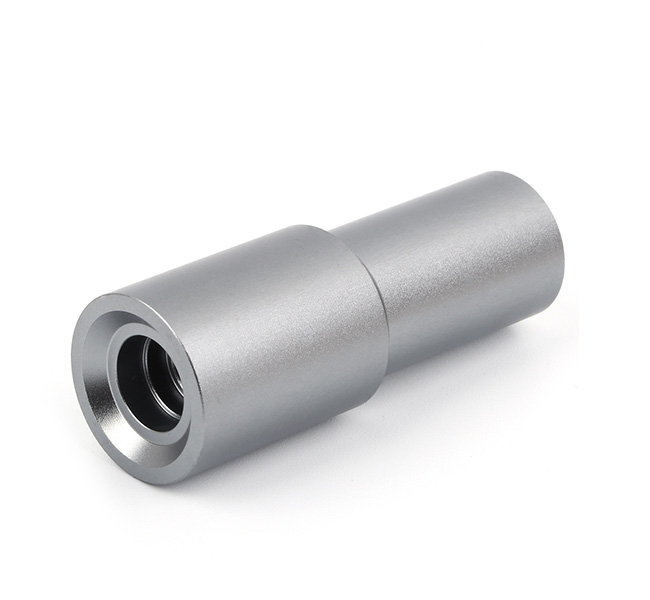
Sandblasting is also namely abrasive blasting. It refers to using the compressed air of the sandblasting machine as the power to form a high-speed jet jet to spray the material to the surface of the workpiece to be treated, so that the surface of the workpiece can obtain a certain degree of cleanliness and different roughness.
There are some general raw materials including copper ore, quartz sand, emery sand, iron sand and Hainan sand.
The Class of Sandblasting
There are two representative international standards for the grade of sand blasting, namely cleanliness. One is the "SSPC-" formulated by the United States in 1985. The second is "SA-" formulated by Sweden in 1976. It is divided into four grades, namely Sa1, Sa2, Sa2.5 and Sa3. It is an international common standard and is described in detail as follows:
Sa1 (equivalently American SSPC-SP7): using the easy manual methods to polish parts, it is the lowest class.
Sa2 (equivalently American SSPC-SP6):Using sandblasting machine to polish parts, it requires the oil, rust, corrosion and others can not be exited on surface of parts.
Sa2.5 : A level commonly used in industry and used as an acceptance of technical requirements and standards. It requires near white cleaning.
Sa3 (equivalently American SSPC-SP6): It is the highest treatment level in the industry, also known as white cleaning level (or white level), defects, rust and so on must not exist.
The advantages of sandblasting
#1: Polishing the surface of part to improve smoothness, which makes parts keep uniorm metal color. The appearance of product looks more beautiful.
#2: The surface of product is flat and the burr is removed, which avoid the harm of burr to human.
#3: Sandblasting can make a small round angle at the edge of part, which makes the appears more beautiful, more precise.
#4: The mechanical parts can produce even fine concave surface after sandblasted, it will have a nice quality surface after have being anodized.
Which Types of Sandblasting Can We Offer?
There are lots of types in sandblasting, such as wet sandblasting, vapor blasting, bead blasting, wheel blasting, vacuum blasting and so on.
At NiceRapid, we can offer the common type bead blasting. It is a process of removing surface deposits by applying fine glass beads at a high pressure without damaging surface. Bead blasting is used to clean calcium deposits from pool tiles or any other surfaces, remove embedded fungus, and brighten grout color. Sometimes for auto body work, bead blasting is preferred over sand blasting because bead blasting tends to create a greater surface.
Laser Engraving
Many customers have their own brand 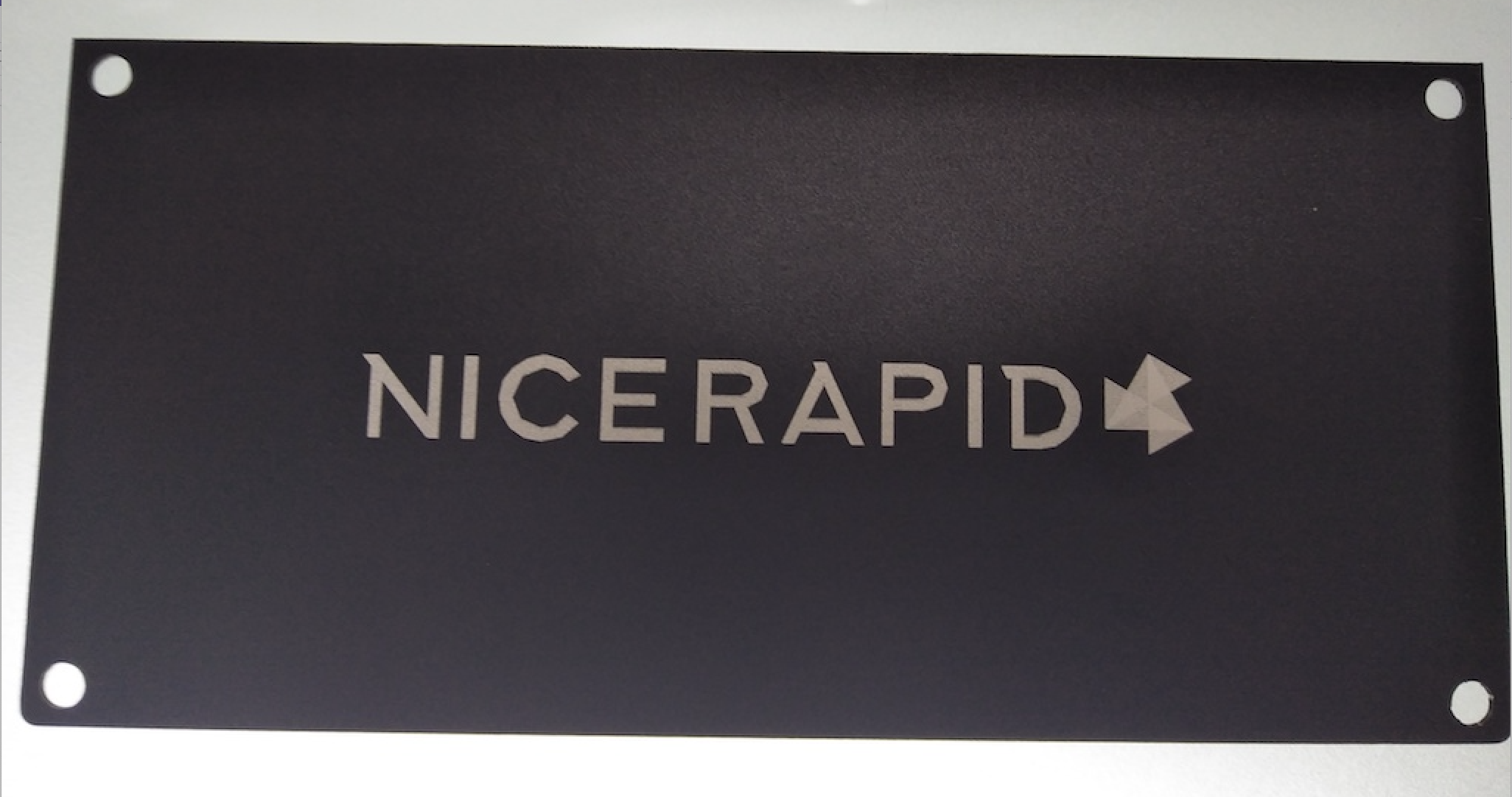
series and will require the logo can be printed on products. And there are some methods such as silk screen, pad printing, engraving laser, gold stamping etc…Among these printed methods, laser engraving is the easiest and fast methods.
What’s Laser Engraving?
Laser engraving is a technology that using laser to engrave writing, letters, numbers, logo and others on surface of products. There is no engraving marks on products and the surface is still smooth.
Some Benefits of Laser Engraving
[1]. There is no contact with the material surface, it is not affected by mechanical movement, the surface will not be deformed, and generally does not need to be fixed.
[2]. It is not affected by the elasticity and flexibility of the material, but can also be applied to soft materials.
[3]. High machining accuracy, high speed, wide application fields
The Application Field of Laser Engraving
# Advertising Decoration
# Printing package
# Rapid Prototyping
# Handicrafts
Pad Printing
Pad printing also named tampography, it is a process of transferring a 2D image onto a 3D part. The pad printing machines consist of an etched plate ( also name as cliché) and pad, usually the type of range depending upon the number of colors and size.
How Does Pad Printing Work?
The pad printing machines consitont of three components (the plate, the inu cup and pad) that can delivery a print to a substrate. Firstly, the plate is etched with an image; Secondly, the ink will be stored in a cup, when the cup slides over the etched plate and leaves a minuscules amount of ink in the etch. The printing pad is a delivery system that presses a somewhat soft silicone material on the etching filled with ink to obtain an image, and moves it to the substrate, finally presses it again to transfer the image.
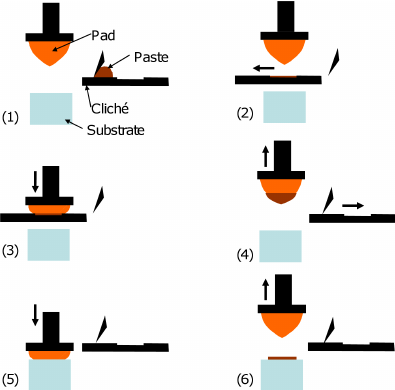
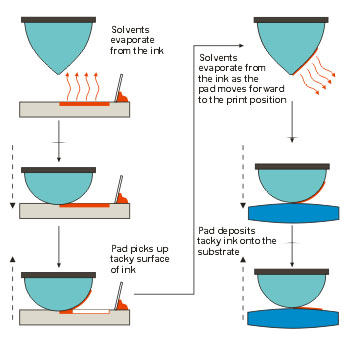
In order to have a better understand of how does pad printing work, we will introudce these components seperatly.
What’s a Pad?
Pads are made from silicone material, it is an ink transfer system during pad printing process.
Different type and hardness depending on the application. Common pads are round and retngular shape but any other shape are avalibable as well. The shape and size also depending on the application and artwork that required.
What’s an ink cup?
The ink cup is a housing mechanish that used for the ink printed on a part. When ink cup slides over the etched plate, it leaves a small amount of ink in the etch. This process named doctoring.
And the ink cup consitont of a ring and cup two main components. The ring can be used for doctoring the plate, to ensure the ink is only left in the etched postion of plate. The material of ring can be metal, plasti and ceramic. Usually the ceramic is the preferrable due to ceramic is gentle enugh and strong, it will not scratch the plate.
What’s the plate?
A pad printing plate (also called cliche) is etched with the image, which can hold the image to be printed.
It includes two types of etch process: Laser Plate-making and Photopolymer Plate-making.
Laser plate-making is a very fast process of etching a plate with a CO2 or fiber laser, it uses computer technology to etch plate, which has complete repeatability. Usually etching a plate needs 5-7 minutes.
Photopolymer plate-making utilise the photosensitive plate material and a UV exposure unit to let the plate exposed to UV light numberus times. Photopolymer plate-making takess about 30 minutes process time, but it is the most cost-effect method to etch plate.
The Application of Pad Printing
Pad printing has a wider range in variety of industries, especially for industrial, promotional and garments.
#Pens
#Flash drives
#Silicone Items
#Watch face
#Garment tags

















